For this week’s blog, I analyzed two different pieces of media that dealt with misinformation.
First, I checked out News Literacy Project’s RumorGuard website. According to the website’s about section, the News Literacy Project is a nonpartisan education nonprofit attempting to teach people news literacy with the RumorGuard service. Their goal is to help users better recognize misinformation by providing examples of viral rumors and explaining why it is misinformation. On the main page, there is an endless list of different “recent checks” they have done on different viral rumors. For example, this check tells us about a video that went viral on Facebook reportedly showing dolphins protecting a birthing whale, however according to RumorGuard, the claim is not accurate to the footage. The page has a big red box stating, “False Context”, and below that it states in quick facts that the video mentioned was not filmed when it said it was, and isn’t even showing dolphins protecting whales. Instead, it is dolphins and whales both feeding on sardines in 2021. This is just one example of how RumorGuard is preventing misinformation from spreading, while simultaneously giving their audience ways of identifying inaccurate media and practicing skepticism.
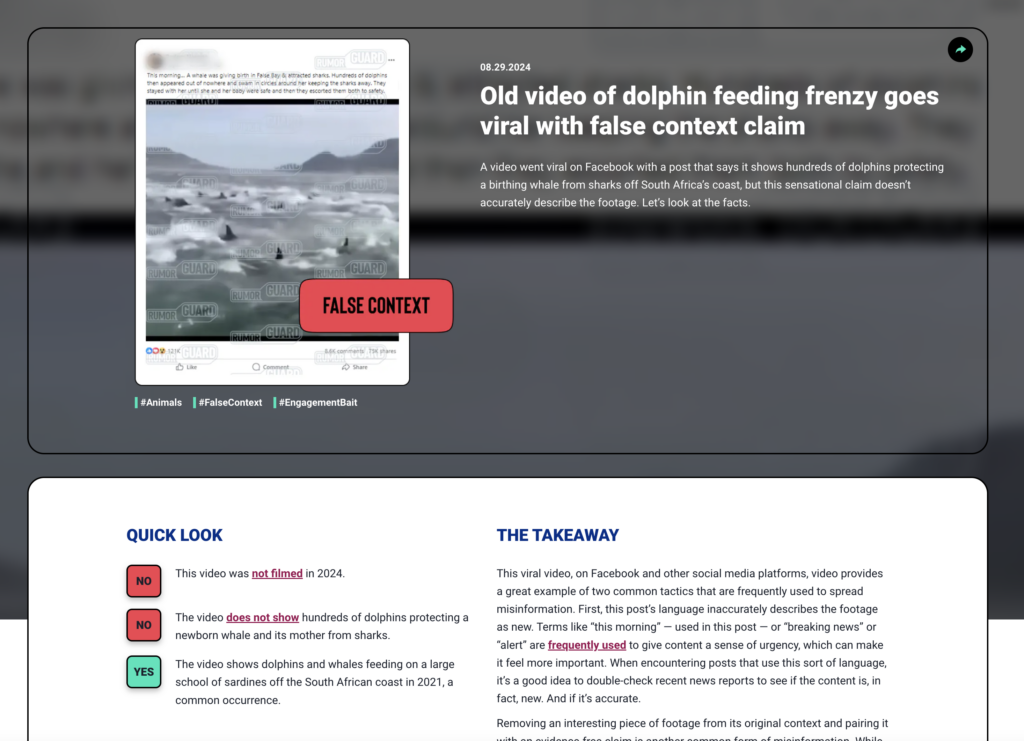
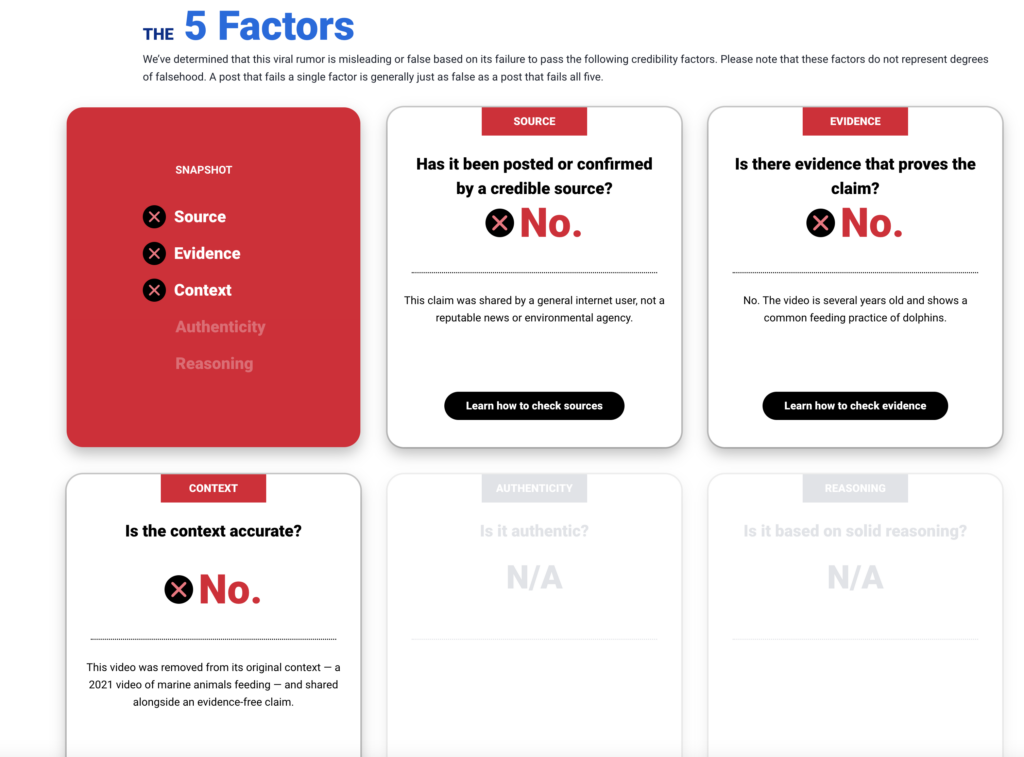
An article in Forbes written by Bryan Robinson, Ph.D. states that even “fake news” can be beneficial, because when remembering misinformation you’ve encountered in the past, you are better able to recall truthful memories. Robinson adds that despite misinformation becoming more believable the more you encounter it, reminders of misinformation you’ve seen can help prevent one from remembering it as true in the future. Because of this, the way that RumorGuard regularly posts misinformation and explains why it isn’t accurate can help people remember facts and improve their accuracy when encountering misinformation. I think that this is an extremely beneficial service for everyone, and I encourage others to check it out for themselves.

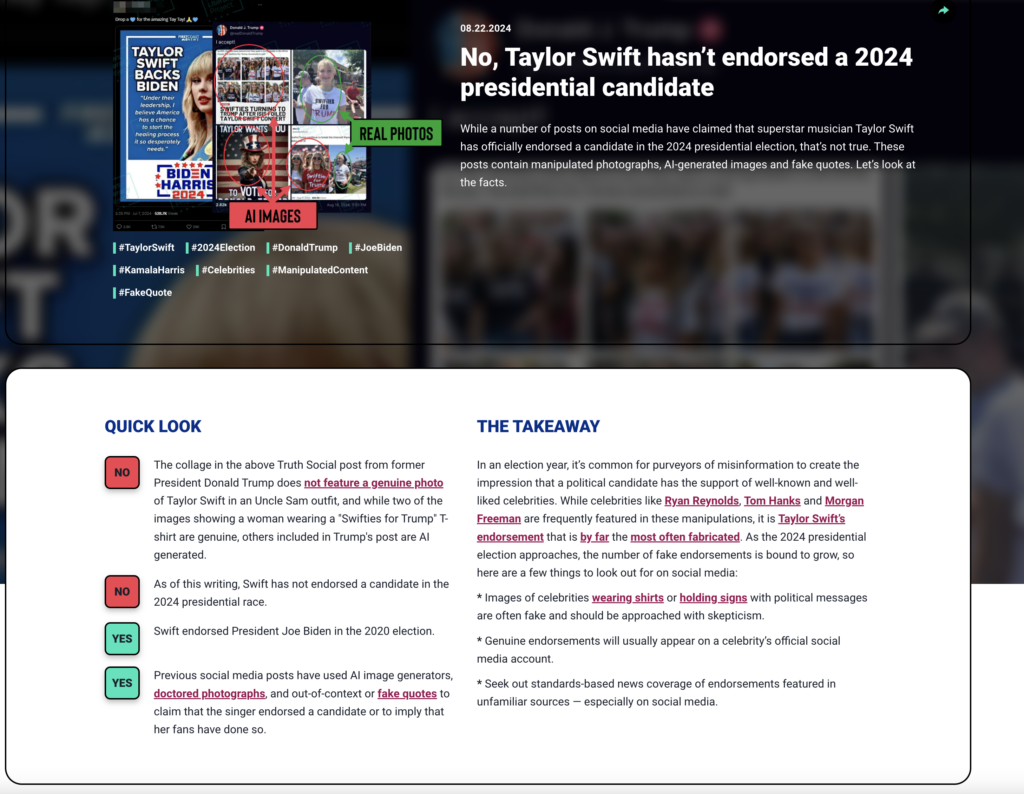
Next, I played the game Fake It To Make It. This was a highly interactive game that involved creating a persona, a news site, and more. To start the game, you will select one of 4 characters to represent you. In addition, you give a first name, and select a monetary goal to purchase. As the game gets started, you are given tasks to spread misinformation in order to reach your monetary goal. You create a website, logo, and even things like a domain and theme for your website. Once fully started, the game gets quite in depth; prompting you to do everything from copy previously made articles, planting articles using fake use profiles to post to different social media groups. The goals move from reaching a monetary goal per article to even more negatively motivated goals such as planting articles to instill fear to an audience. Further into the game, it gets somewhat harder, as instead of essentially sharing fake news, you are tasked to create your own articles. The goal is to create articles with specific targets, attempting to have the most amount of drama and credibility in order to influence the most amount of people. Once I got posts that went “viral” and got viewed by celebrities, I reached my initial monetary goal and “won” the game.

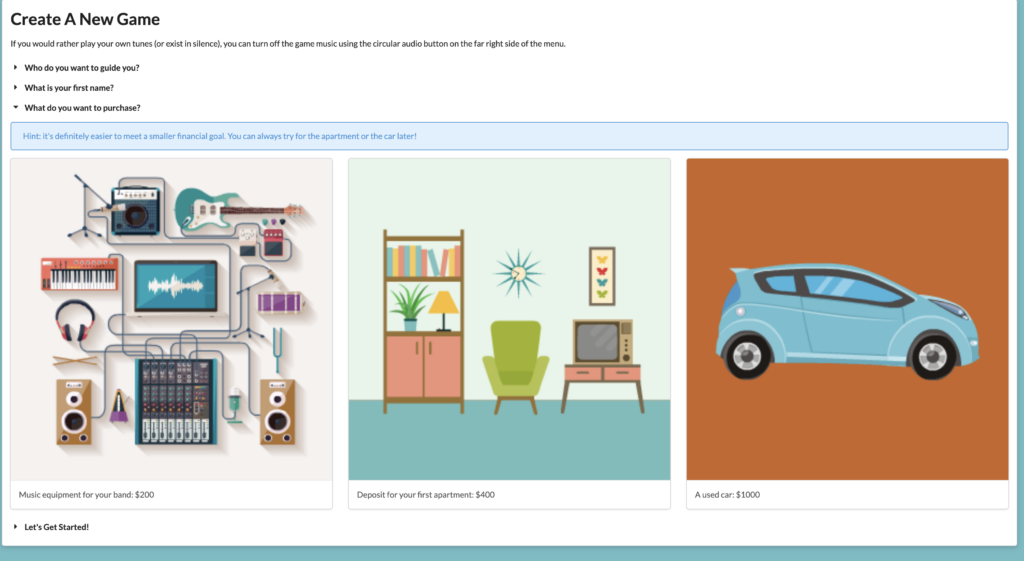



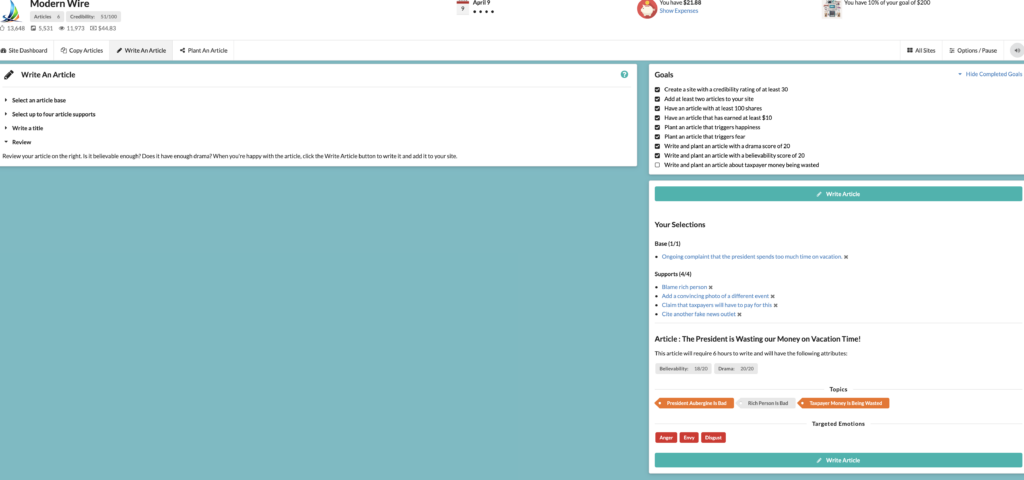
I found this to be a very interesting game and project. I thought it was fascinating to see how this could play out in real life, and it did have a sense of realism to it, despite feeling obviously fake at times. While it was a slightly comical, fun game, it was also somewhat scary and unnerving to play the part of a person deliberately spreading disinformation. Once I completed the game, the creator gave more information about it, why it was created, and how players can be better informed about misinformation. The creator stated “My hope is that by making players more aware of how and why fake news is written and distributed, that they will be more skeptical of what they encounter in the future. In general, I think that better understanding how and why we are manipulated by others, for profit or power, is worthwhile knowledge to have.” In response to why the game was created. In addition, the creator shared articles on how to identify fake news, suggested players check their sources and consider if their emotions are being manipulated by media similar to in the game.
I think educational games are a great way to help people learn about misinformation in a hands-on manner. When physically creating your own articles like in these games, it shows what goes into creating misinformation. This in turn helps eradicate misinformation by giving audiences the ability to identify the methods and materials used by those who share false information. Other tools such as RumorGuard are also incredibly helpful in eradicating misinformation by clearly stating what is true and what is false, while also explaining why it’s not accurate.

Leave a Reply